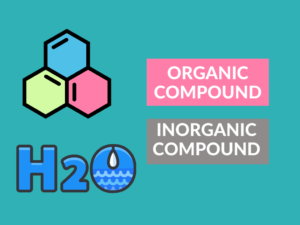What is ester
Esters are organic compounds that are formed when an alcohol reacts with an acid, resulting in the elimination of a water molecule. They have a characteristic fruity or floral odor and are commonly used in fragrances, flavorings, and solvents. Esters can also be found naturally in fruits, flowers, and essential oils.
Examples of ester
– Ethyl acetate: Commonly used as a solvent in nail polish removers and as a flavoring agent in food and beverages.
– Methyl salicylate: Found in wintergreen oil and used in antiseptics and as a flavoring agent in products like chewing gum.
Uses of ester
– Fragrances: Esters are widely used in perfumes and colognes due to their pleasant odor.
– Food and beverages: Esters are used as flavoring agents in various food and drinks to enhance their taste.
– Solvents: Esters such as ethyl acetate are commonly used as solvents in paint, varnishes, and adhesives.
What is ether
Ethers are organic compounds that contain an oxygen atom bonded to two alkyl or aryl groups. They have a characteristic sweet smell and are commonly used as solvents, anesthetics, and as starting materials for the synthesis of other organic compounds.
Examples of ether
– Diethyl ether: Used as a solvent and as a starting material in the production of other organic compounds.
– Methoxyethane: A volatile ether used as a solvent and as a refrigerant.
Uses of ether
– Solvents: Ethers are widely used as solvents in industries such as pharmaceuticals, coatings, and cleaning agents.
– Anesthetics: Some ethers, such as diethyl ether, were historically used as general anesthetics. Although their use has declined, they are still used in certain settings.
Differences Table
| Difference Area | Ester | Ether |
|---|---|---|
| Synthesis | Formed from the reaction of an alcohol and an acid | Formed from the reaction of an alcohol and an alkyl halide |
| Odor | Characteristically fruity or floral | Characteristically sweet |
| Applications | Used in fragrances, flavorings, and solvents | Used as solvents, anesthetics, and starting materials in synthesis |
| Functional Group | Ester group (-COO-) | Ether group (R-O-R’) |
| Hydrogen Bonding | Can form hydrogen bonds with water | Cannot form hydrogen bonds with water |
| Boiling Point | Generally higher than ethers | Generally lower than esters |
| Reactivity | May undergo hydrolysis and esterification reactions | Relatively unreactive, except for nucleophilic substitution reactions |
| Solubility | Soluble in both polar and nonpolar solvents | Soluble in polar solvents, but not in nonpolar solvents |
| Anesthetic Properties | Not commonly used as anesthetics | Historically used as general anesthetics |
| Natural Occurrence | Found naturally in fruits, flowers, and essential oils | Not commonly found naturally |
Conclusion
In summary, esters and ethers are both organic compounds with distinct characteristics and applications. Esters are commonly used in fragrances, flavorings, and solvents, while ethers find applications as solvents, anesthetics, and starting materials for synthesis. They differ in terms of their synthesis, odor, functional group, reactivity, and natural occurrence.
Knowledge Check
1. How are esters and ethers synthesized?
– Esters: Formed from the reaction of an alcohol and an acid.
– Ethers: Formed from the reaction of an alcohol and an alkyl halide.
2. What is the characteristic odor of esters?
– Fruity or floral.
3. What are some common uses of esters?
– Fragrances, flavorings, and solvents.
4. What is the functional group in esters?
– Ester group (-COO-).
5. Can ethers form hydrogen bonds with water?
– No, ethers cannot form hydrogen bonds with water.
6. Which compounds generally have a higher boiling point, esters, or ethers?
– Esters generally have a higher boiling point than ethers.
7. Are esters more reactive than ethers?
– Yes, esters can undergo hydrolysis and esterification reactions, while ethers are relatively unreactive except for nucleophilic substitution reactions.
8. Are ethers soluble in nonpolar solvents?
– No, ethers are soluble in polar solvents, but not in nonpolar solvents.
9. What are the anesthetic properties of ethers?
– Ethers, such as diethyl ether, have historically been used as general anesthetics.
10. Are ethers commonly found naturally?
– No, ethers are not commonly found naturally.
Related Topics
– Difference between aldehydes and ketones
– Difference between alcohols and phenols
– Difference between acids and bases


